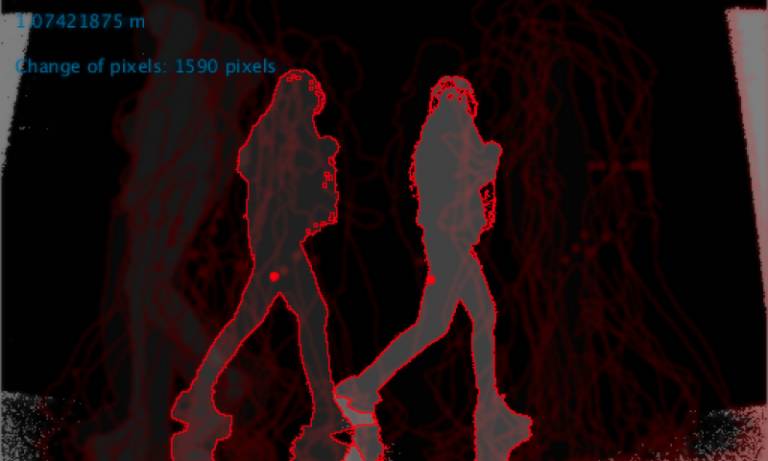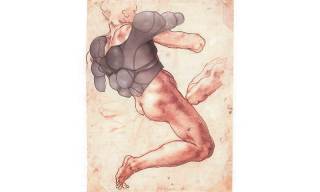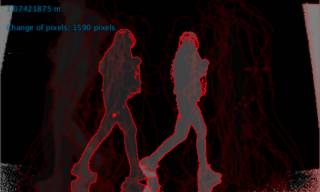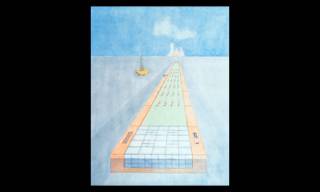PhD Research Introductions: Ava Aghakouchak | Ting Ding | Sally Nikoline Cummings
20 June 2017, 4:00 pm–7:00 pm

Join new Bartlett School of Architecture PhD candidates as they introduce their work.
Event Information
Open to
- All
Organiser
-
The Bartlett School of Architecture
Location
-
Room 6.02, The Bartlett, 22 Gordon Street, London WC1H 0QB
PhD introductions
Ava Aghakouchak
Ting Ding
Sally Nikoline Cummings

Ava Aghakouchak
Amplifier Prosthetics as Tools for Synesthetic Appreciation of Architecture
Abstract
In this research I look into sciences growing understanding of how the brain binds elements of sensory input into a single experience, and situations where the relation between stimulus and sensation becomes obscure; such as in the condition of synesthesia. Building upon my Master’s thesis project Sarotis, I continue to investigate the possibility of amplifying visuospatial information in order to achieve artificial synesthetic experiences. Alongside the study of temporal factor in these conditions will be used to speculate whether it is possible to turn learnt synesthesia into subconscious subliminal states. My investigations are framed by the notion of body as the main perceptual object and focus on the use of amplifier prosthetics.

Ting Ding
Affective Computing Based On Gait Recognition And Artificial Neural Network In Architectural Built Environment Abstract
Abstract
The proposed research will aim to expand on my MSc thesis, which presents a design for an affective computing system based on gait recognition and the artificial neural network (ACGR_ANN). I propose using this PhD opportunity to design an application that will apply ACGR_ANN to the architectural built environment, with the aim of enhancing an individual’s experience of their architectural environment, by understanding and responding to their emotional state, which is assessed through feedback gathered while they are in the building.
Introduction
For my PhD, I propose extending the design of an application initially developed during my MSc thesis on the topic of ACGR_ANN. For the sake of the reader who is not already familiar with my research up to this stage of development, there will be a brief summary of important topics from the MSc thesis.
Summary of the MSc thesis
The MSc thesis developed an affective computational system based on gait recognition, quantifying affective (1) parameters by using the PAD emotional state model (2), and categorising the emotional states using the multi-layered perceptron (MLP) type of artificial neural network (ANN).
For the thesis, gait was chosen as a means of studying human emotion, since some physiological studies have shown that bodily expression can be as legible as facial expression in determining a person’s emotional state, while requiring less computational investment.
The ACGR_ANN system works by using an ANN to extract PAD traits from gait silhouette images recorded for the purpose of developing the system. The ANN was utilised since it learns through manually labelled patterns based on the PAD emotional state model.
The system gives eight coherent dynamic affective states (3), resulting in the right mood classification as the output of the ANN. The result of the MSc system shows a highly successful emotional classification rate and a clear numeric indication of emotion. Furthermore, the results reveal correlations between three gait traits: speed, changes of variability and stride length.
Proposed PhD research topic
The aim will be to design an application for the architectural built environment that can read human emotion and respond to it by altering the architectural environment to enhance the building user’s experience. The interest of this proposed topic lies in the fact that the relationship between gait recognition, affective computing and the architectural environment has not yet been used in a way that can affect the building user.
Notes
- As the synonym for ‘affect’, the term ‘emotion’ is the ‘origins of the field may be traced as far back as to early philosophical inquiries into emotion, the more modern branch of computer science’ (Picard, 1995).
- The PAD model was developed by Mehrabian and Russell and categorises the subject of human emotions into three dimensions: P as ‘pleasure–displeasure’ level, A as ‘arousal–nonarousal’ level, and D as ‘dominance–submissiveness’ level (Mehrabian & Russell, 1974; Marsella, Gratch & Petta, 2010).
- The term ‘affective states’ refers to the psycho-physiological constructs of emotional states varying along three principal dimensions: pleasure, arousal and dominance.

Sally Nikoline Cummings
The Cold War Pool
Abstract
The Cold War is as much a story about social imaginaries as it is about political ideologies. These dreamworlds invested the capitalist and communist built environments with collective desires. The swimming pool was no exception. Providing the human body with a building in which it can, quite literally, float, and offering this in the unusual context of social nudity and sensory exceptionalism, the pool’s utopian character is striking. David Hockney’s 1967 painting, A Bigger Splash, with its clean lines, bright water spray and sunny, green palm planes conveys this well. Simultaneously the pool can quickly descend into dystopia, a dead body floating as in Billy Wilder’s (1950) Sunset Boulevard or the Mukomol Vostoka, an aquatic centre completed by Moscow in 1940 and designed to cater for 5,000 fizkul’tuniki but that had no tower, no swimming pool, a shaky viewing platform and a dirty, stony beach. This ambivalence is captured in the very Cold War confrontation itself, its content notable for the two systems’ similarities as well as their differences, neatly expressed by Rem Koolhaas’ (1977) The Story of the Pool.
Image: OMA, Illustration for The Story of the Pool (1977)
Top image: Ting Ding
 Close
Close

